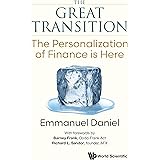Imagine a world where your investments aren’t just growing, but accelerating at rates that challenge traditional financial wisdom. It’s a compelling thought, especially when a seasoned investor like Stuart Wyeth, featured in the video above, posits that if he “can’t make 60% on [his] return,” it makes him “wonder whether [he] should invest.” This bold stance immediately draws a line in the sand, pitting the established stability of property against the explosive, albeit volatile, potential of Bitcoin. For many, the question isn’t just about choosing an asset; it’s about navigating the future of wealth generation in an ever-evolving economic landscape.
The Rise of Bitcoin: A Mirror on M2 Money Supply
One of the most striking insights from Stuart Wyeth is his assertion that “Bitcoin is a complete mirror on the M2 money supply.” This isn’t just a casual observation; it’s a profound statement about Bitcoin’s role in the modern financial ecosystem. The M2 money supply measures the total amount of money in circulation, including physical currency, checking accounts, and easily convertible near-money assets. When central banks increase the M2 supply, often through quantitative easing or fiscal stimulus, the purchasing power of traditional fiat currencies can dilute. Bitcoin, with its fixed supply cap, acts as a counter-narrative to this inflationary pressure.
As governments globally expanded their money supplies significantly over the past decade, particularly in response to economic crises, the value proposition of scarce assets became starkly apparent. Bitcoin, designed with a hard cap of 21 million coins, offers a predictable scarcity that makes it an attractive hedge against inflation. This characteristic means that as more fiat currency chases a relatively fixed supply of Bitcoin, its price tends to rise. This isn’t just theoretical; data often illustrates this correlation, showing Bitcoin’s price movements reflecting broader monetary policy shifts.
Chasing Returns: Bitcoin’s Average 60% and Future Projections
Stuart Wyeth’s focus on a 60% average return for Bitcoin sets a high bar, contrasting sharply with typical property investment yields. While past performance is never a guarantee of future results, Bitcoin has demonstrated periods of extraordinary growth. Historically, its annualized returns have often dwarfed those of many traditional asset classes, including real estate, stocks, and bonds. This high-growth potential is a primary driver for many investors exploring digital assets.
The prediction of Bitcoin reaching “$13 million by 2045” is a long-term forecast that, if realized, would represent an astronomical return from current levels. Such projections often stem from models that account for Bitcoin’s adoption curve, its role as a store of value, and its continued mirroring of global monetary expansion. While aggressive, these types of forecasts underscore the belief among proponents that Bitcoin is still in its early stages of price discovery and market capitalization compared to assets like gold or global real estate.
Property Investment: A Foundation with Nuance
On the other side of the investment spectrum lies property, a long-standing pillar of wealth accumulation. When asked about his vision for property, Stuart shifts his focus to specific strategies, specifically “six bed HMOs.” Houses in Multiple Occupation (HMOs) are a distinct segment of the real estate market, often favored by investors seeking higher rental yields. An HMO involves renting individual rooms in a property to multiple tenants, leading to a higher aggregate rental income compared to a single-family let.
Investing in HMOs requires a different skillset and risk profile than traditional buy-to-let properties. It involves managing multiple tenancy agreements, adhering to stricter regulatory standards (licensing, safety), and often more intensive property management. However, the potential for significantly enhanced cash flow and return on investment can be compelling. For example, while a standard residential property might yield 3-5% annually, a well-managed HMO could potentially deliver net yields of 8-12% or even higher in specific markets, depending on acquisition costs, renovation expenses, and rental demand. This strategy appeals to investors who are hands-on and looking to maximize rental income rather than relying solely on capital appreciation.
Maximizing Property Yields: Beyond the Traditional
The shift from traditional buy-to-let to specialized strategies like HMOs highlights a crucial point: property investment isn’t monolithic. To compete with the allure of high-growth assets like Bitcoin, property investors are increasingly exploring more intensive, value-add approaches. These include:
- Commercial Property Conversions: Transforming disused office spaces or retail units into residential apartments.
- Serviced Accommodation: Operating properties as short-term rentals (like Airbnbs) for higher nightly rates, albeit with greater operational demands.
- Developments and Flips: Acquiring properties, adding significant value through renovation or redevelopment, and then selling them for a profit.
Each of these strategies aims to generate returns that can potentially rival or exceed the more modest yields of conventional residential rentals. However, they also introduce increased complexity, higher capital requirements, and greater market risks. The expertise and active management required for these endeavors underscore why Stuart Wyeth might draw a comparison to Bitcoin’s returns – both demand a focused approach to generate exceptional profits.
Diversification and Risk: Balancing the Portfolio
The conversation around Bitcoin versus property isn’t necessarily an ‘either/or’ proposition for every investor. For many, a diversified portfolio incorporates elements of both traditional and digital assets. Property offers tangible value, stable rental income, and often acts as a hedge against inflation (though perhaps less dynamically than Bitcoin). It provides a sense of security and a physical asset that can be leveraged or redeveloped.
Bitcoin, conversely, offers unparalleled growth potential but comes with significant price volatility. Its ‘digital gold’ narrative is strong, but its journey as a recognized asset class is still relatively young. Understanding the M2 money supply’s impact on Bitcoin, along with its average 60% annual return, showcases its unique place in a portfolio designed for aggressive growth and inflation protection. Ultimately, the decision to favor Bitcoin or property, or to integrate both, hinges on an individual’s risk tolerance, investment horizon, and personal financial goals. Both avenues offer powerful tools for wealth creation in their own right, demanding careful consideration and strategic execution to truly thrive.







